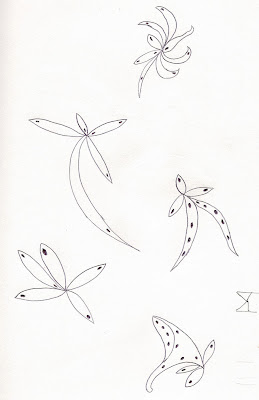I've been hearing and reading about this book since beginning this course, which is inconveniently large as I have a can of deodorant, a sketchbook, notebook and other big books like French for Idiots living permanently in my bag.
At the moment, we're going through each of the chapters in each lecture. So I'm playing catch-up with that at the moment and I'll start with the first chapter, titled:
Chapter 1: What Is Interaction Design?
Well, I'm glad it asked in the first chapter, because I was pretty curious as to what I had left my job for in the vain attempt to improve my character on an academic and hopefully employable basis, and a more desperate attempt to learn a trade beyond the options that were lacking in Fine Art (that or I was just too lazy to make a career out of it, but I'll rant about that sorry state of affairs in a remote post).
So, I'm to demonstrate my sudden knowledge of Chapter 1 by examining a handheld device of my choosing, in which case my mobile phone (chosen because it is the nearest interactive handheld object to my person besides the keyboard and I don't want to stand up). Now, I wasn't hugely enthusiastic about touchscreen phones until I got my Sony Ericsson Xperia, where my first impressions were exclaimed in a sequence of "Ooo's!"
In case you're wondering, this is the exact fellow:

Apart from the incoherent delight that I was expressing from playing around with this phone, the reasons why I was attracted to this particular phone out of all the other flashier smartphones, was that there was something slightly slick and at the same time masculine-looking about its overall design. It's not a massive phone, unlike the current ones I've been seeing on other students, which are more or less the surface dimension of a brick. You turn it on by the button on its top right corner (referring to the image in the middle), which you can press to lock the phone as well. The three surface buttons are intricate yet the symbols above it are explanatory - the house means that you go to the home/main menu, default menu; the left button with the u-turning arrow is obviously the Back button on whatever sub-menu you go in to; the right one with the four horizontal lines also indicated that this was like a right-click for extra options. The touchscreen menu itself is easy to use and the symbols on the menu are universal enough to tell you what applications you have installed i.e Facebook, YouTube, Google, Settings, Alarm Clock. It's very simple in its design, yet very slick. Those are my first impressions anyway.
I take issue, however, with its low memory space. You can't install that many more apps onto it, which is somewhat disappointing, due to the amount of forums and media outlets that I'm subscribed to, which makes extra games a bit of a no-go as well, sadly. There are also apps that won't perform very well, mainly because it's an Android phone, but I imagine that's the same issue of compatibility with every other mobile operating system.
A lot of these phones tend to be a bit of a two-handed job, whereas I've found that I can use my thumb while the phone rests in the palm of my hand. Whether or not it was meant to give off that impression I don't know; whether or not that it may perpetuate a speedy road to arthritis I'm not sure either. Come back to me about that in a decade or two.
Overall, it is a sharp design and one that's been durable so far (give it another year and I might upgrade due to boredom and access to income). This is already a step up to the free Blackberry I got a couple of years back. The only appeal of the Blackberry was that it was free; I'm glad I lost it. That phone is meant for tiny hands.








